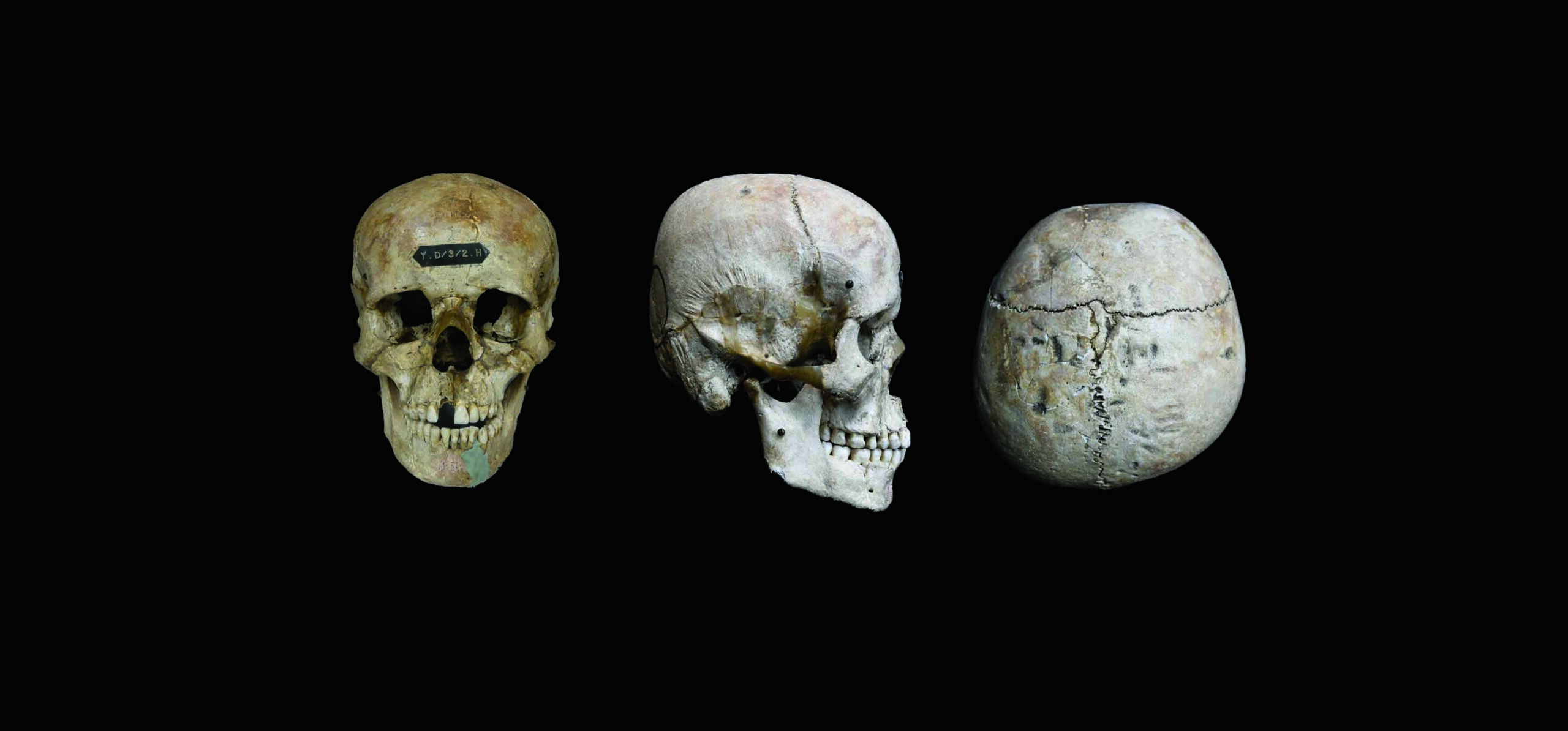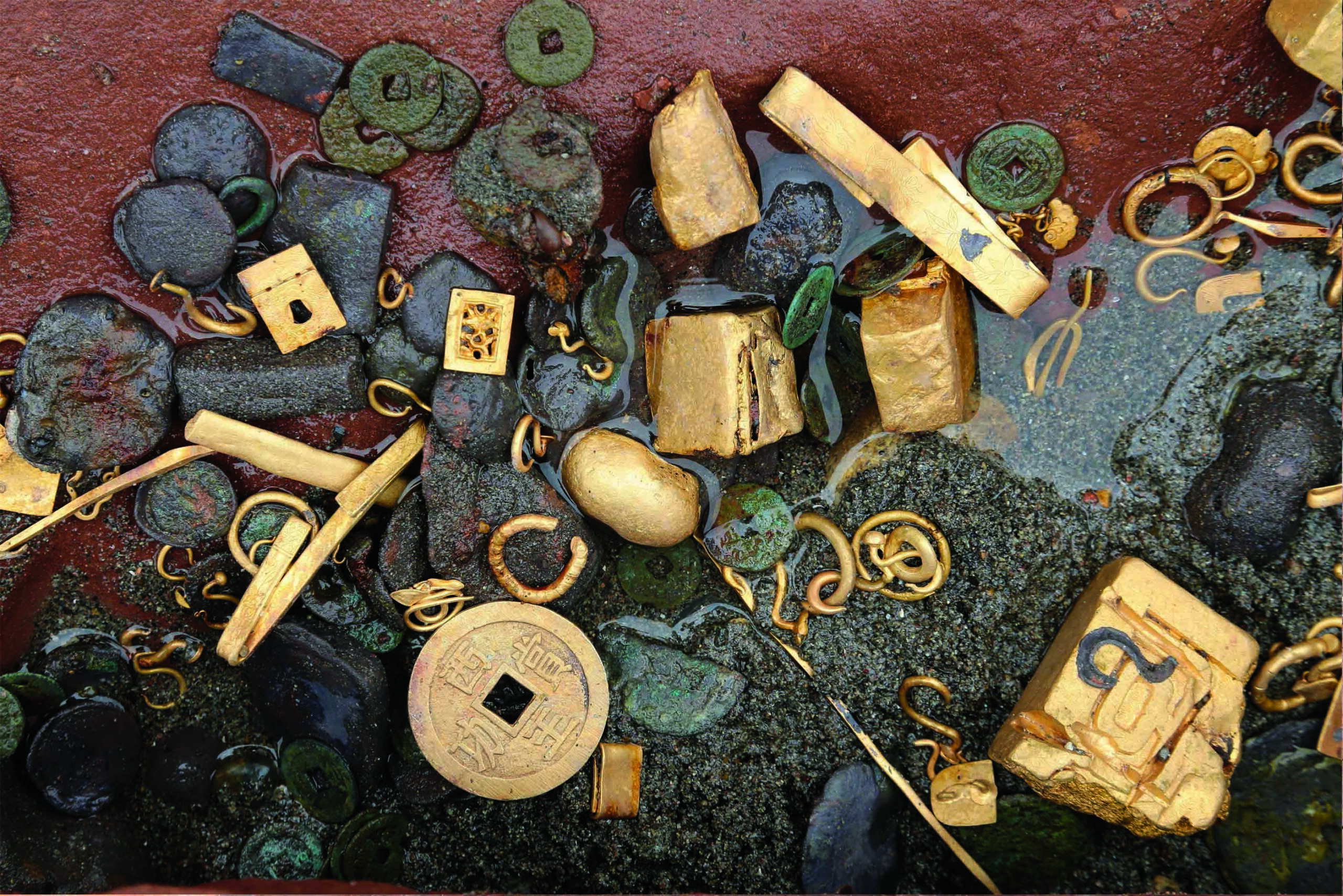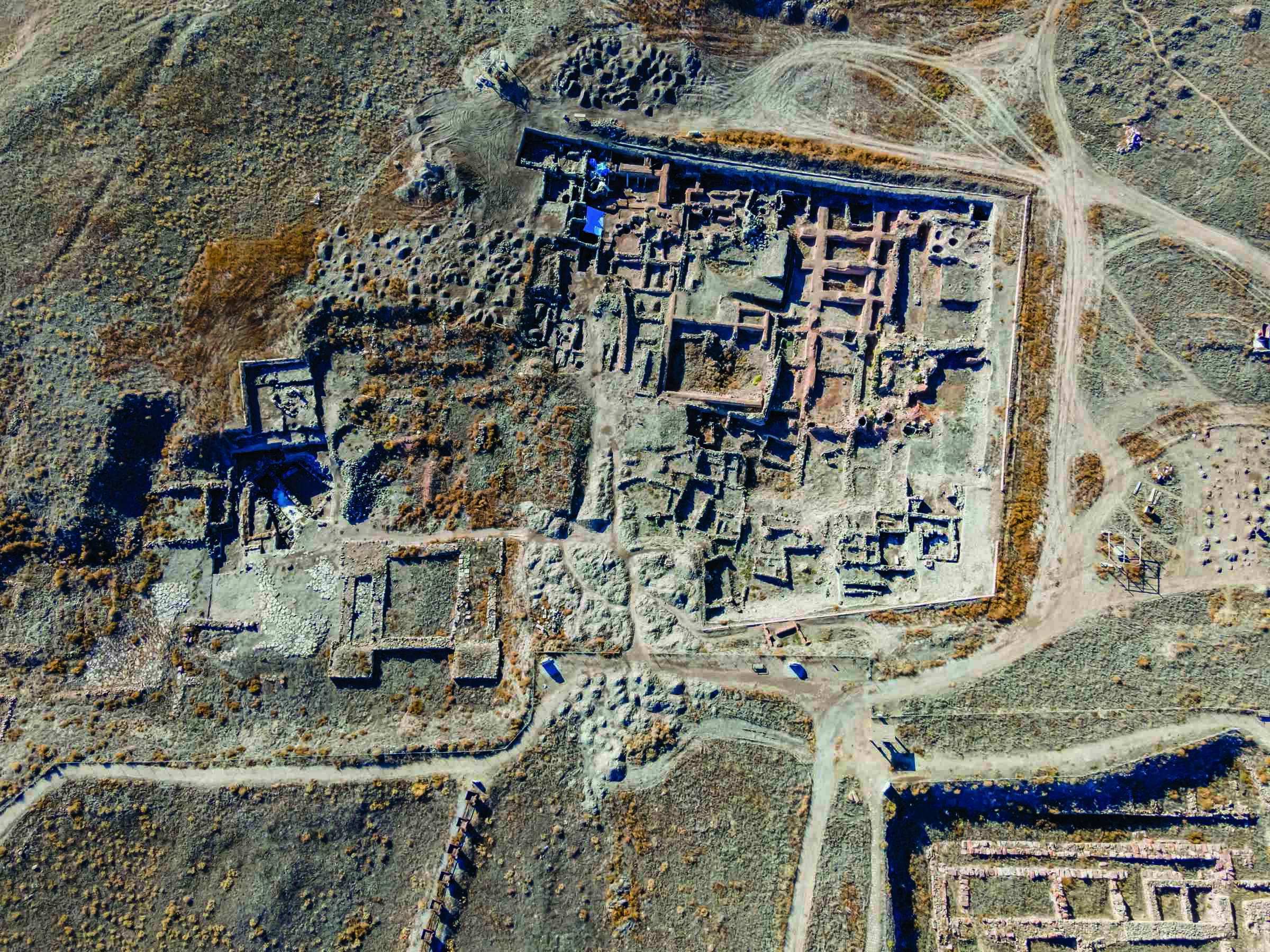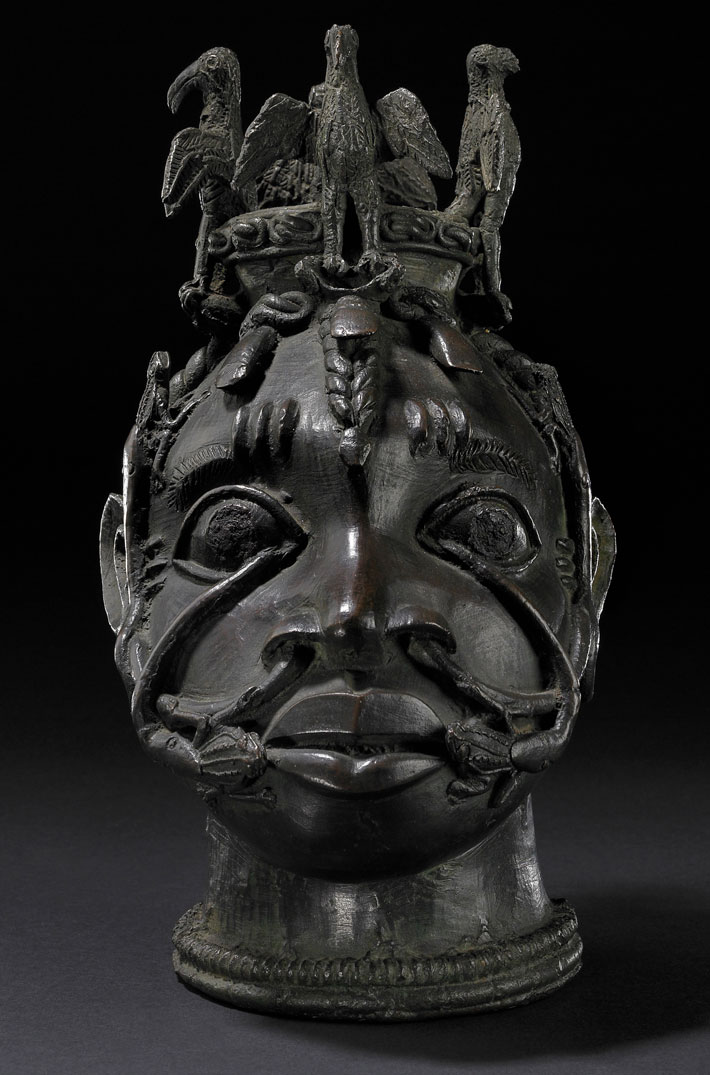
Little is known of the Hirota people, who lived on the southern Japanese island of Tanegashima from the third to the seventh century A.D.—except that they seem to have engaged in long-distance shellfish trade and to have had unusually shaped skulls. Examination of skeletons excavated from a Hirota burial ground on the island has established that the rear part of the skulls, including the occipital and parietal bones, tends to be unusually flat and asymmetrical in a manner not seen in other groups who lived in Japan at the time. “We believe this flattened head shape would have been noticeable at a glance when they were alive,” says James Loftus, an archaeologist at Kyushu University.
Until recently, it was unclear whether the Hirota had intentionally modified the shape of their skulls. Now, using 3-D surface scans, a team including Loftus has detected depressions in sutures where parts of the skulls are joined, suggesting that the skulls were indeed deliberately deformed. Loftus hypothesizes that the Hirota may have chosen to modify their skulls in order to advance their fortunes as shellfish traders, either by mimicking the head shapes of those they traded with or by creating a distinctive look so they would stand out to their trading partners.











